Review of Fendi Spring 2022 Men’s Fashion Show
A Rationalist Architecture Marvel Spawns Linear Elegant Sportswear and A Few Oddities
By Long Nguyen

How you see things – and from where you see them – has never been more important. In this period, our singular point of view has modified our perception of the world – and mine has become so linked to what I see from the arches and the rooftop of our building. It is almost like a bird’s eye view of Rome from here. The colors and the perspective are always changing – the soft palette of the Roman sky is so beautiful, and I wanted it to be the focal point of this collection.
– Silvia Venturini Fendi, on her conception of the Fendi’s spring 2022 collection
.
The Palazzo della Civilità Italiana (also know the Colosso Quadrato or La Groviera colloquially) is a square building commissioned by Benito Mussolini in 1938 for an exhibition hall 1942 World Fair. Conceived by three Italian rationalist architects Giovanni Guerrini, Ernesto La Padula, and Mario Romano, this edifice encompasses the idea of romanità in the blend of past, present, and future in one building.
Fendi moved into the magnificent mid-century six-story building modeled after the original Coliseum as the brand world headquarters since early 2015.
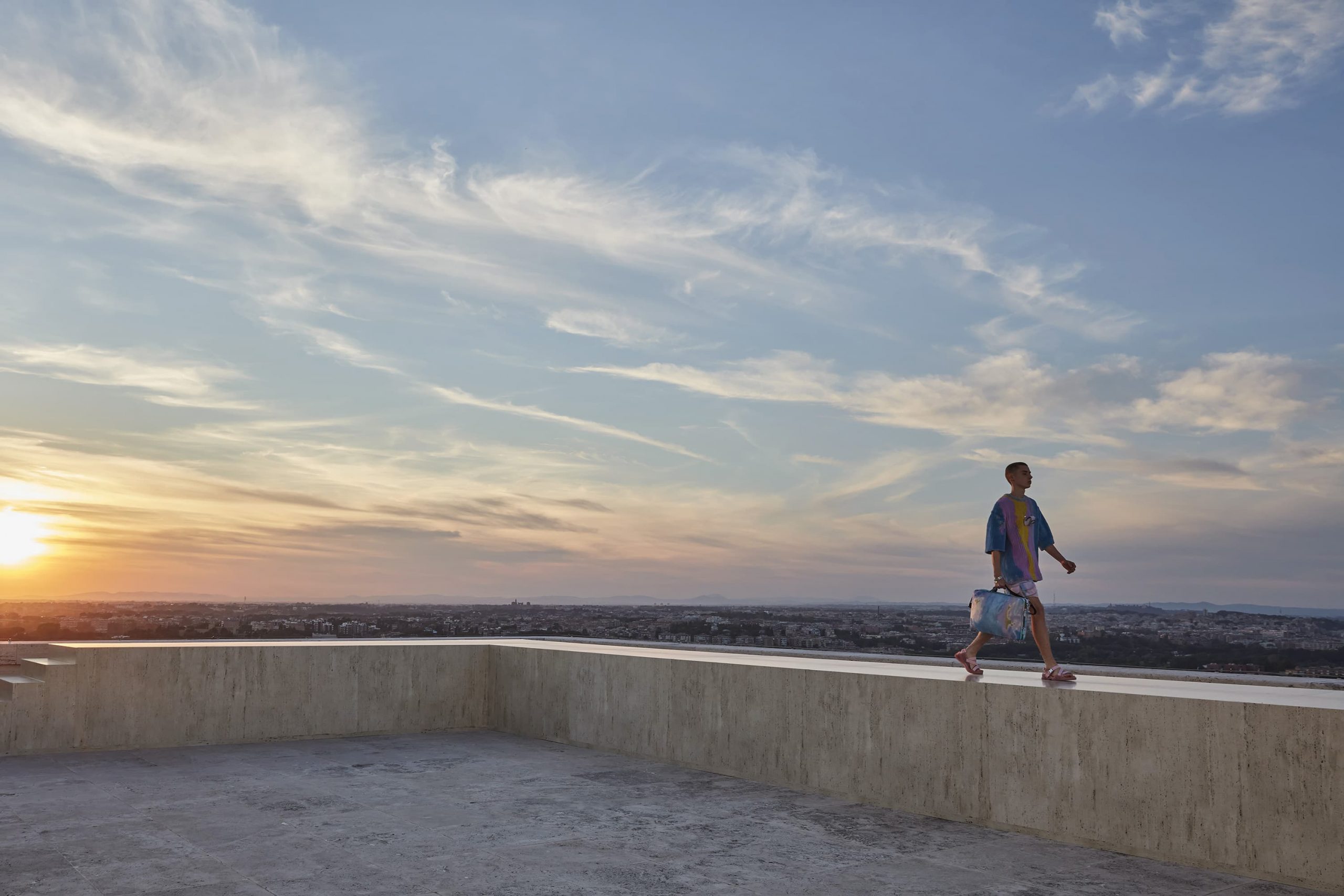
The Palazzo offers a total view of the landscape of the city of Rome from morning into night. This panorama inspired the different shades, especially during the summer months, that spawn the canvas of light pastel colors – sand, lime, light green, light violet, light cement – for this spring collection. The essence of the summer ease and lightness in the constructions and a robust offering of outerwear gave this collection its punch.
Directed by Nico Vascellari, the collection’s film paid homage to this locale and the changing moods during a day into night with music from the Italian composer Alessandro Cortini who built special musical tracks on synthesizers of imagined interstellar travel.
The straight-line alignment of the arches of the building in its travertine cladding gave the collection linear cuts and shapes. It provided the palette of a light camel on a range of straight single breast two buttons jackets paired with hot shorts and a matching shirt or the stone pattern of a long loose coat with the season’s new pants – the shorts.
The strength of this collection lies in the multitude of light outerwear highlighted by a soft cement knee-length vented trench or a pale beige trench with the unique Fendi Selleria stitching on the leather trims of the patch pockets.
The shearling white/grey/blue cloud pattern coat demonstrates Fendi’s expertise with leather craftsmanship transforming the different color shearling near invisible to look like a print pattern of the sky. There is even a sheer organza double breast trench in light early evening sky colors or a greatcoat in dark garment hand-dyed cotton with uneven dyeing patterns.
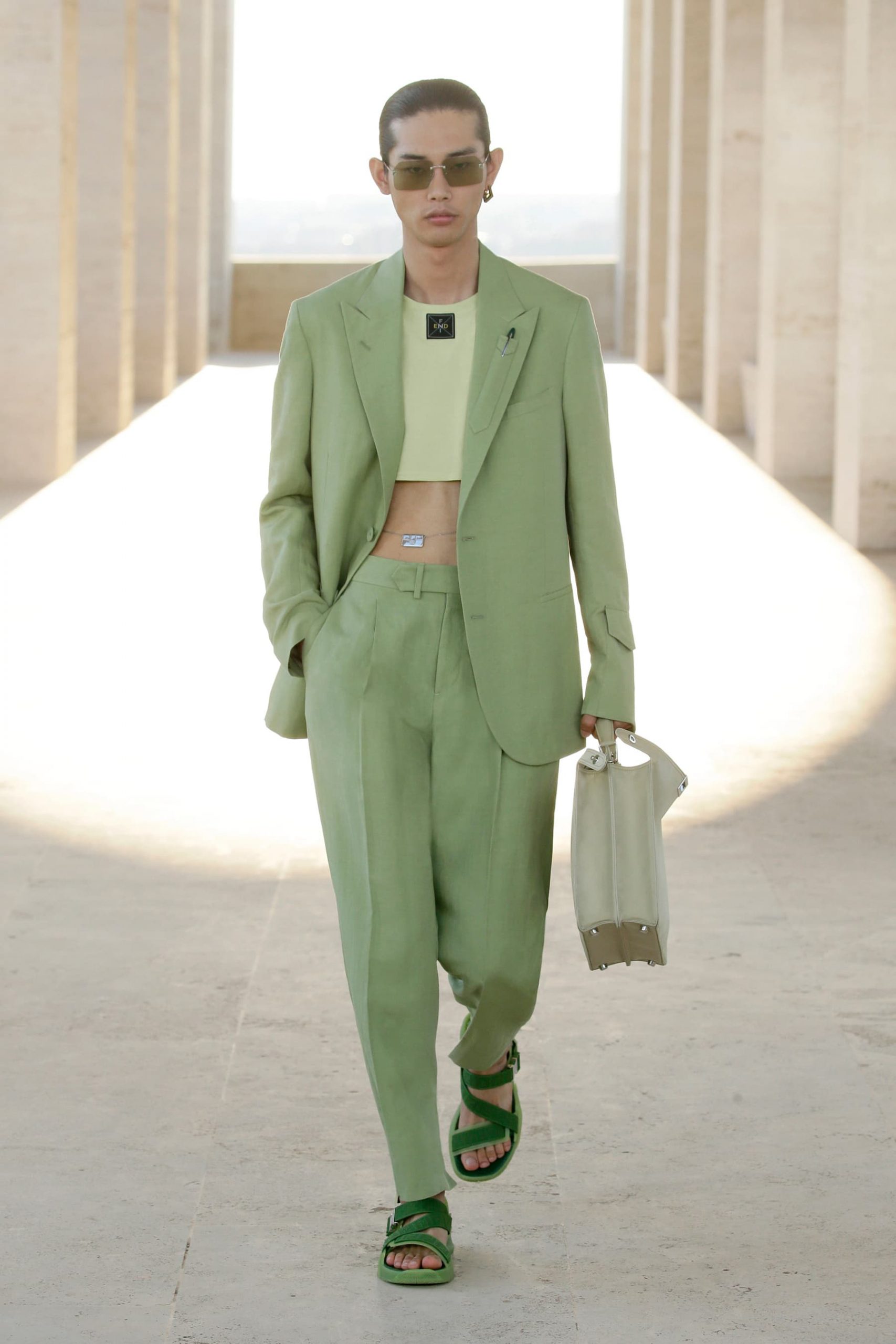
A few of the suits shown, rarely, border on the idea of formality. The basic tailored jacket silhouette is a single breast fitted on top with a round shoulder, two buttons, and a slight flare down from the chest that allowed for more excellent movements. These jackets, either in dark navy or in lime green with flat front pants, are meant more a shirting idea than a proper jacket pantsuit. The Fendi logo knit paired with these jackets are sure commercial hits on the strength of the brand’s name.
Yet, within this fine summer collection, there are a few oddities.
Looking at the live streaming of the film online just before the start of the Euro 2020 match between France and Hungary, it was a surprise to see the sights of midriff jackets.
The light lime midriff jacket paired with a cropped shirt and cropped tie and an elasticized running shorts or with long pants and its twin brother version in total black. Then came the sportier version of a well-cropped cut-out midriff trench worn with khaki linen shorts with a light purple waistband.
In terms of design, at times, this collection ventured straight into a territory occupied by the men’s Calvin Klein Collection under then menswear designer Italo Zucchelli. These midriff looks reminded me of the Calvin Klein Collections I saw in Milano, especially the Spring 2011 show precisely a decade ago today, with the midriff tops. The elegant, sporty tailored garments in mostly light camel palettes dominated Zucchelli’s Spring 2015 show.

Calvin Klein Men’s Collection
Spring 2011
Calvin Klein Men’s Collection
Spring 2011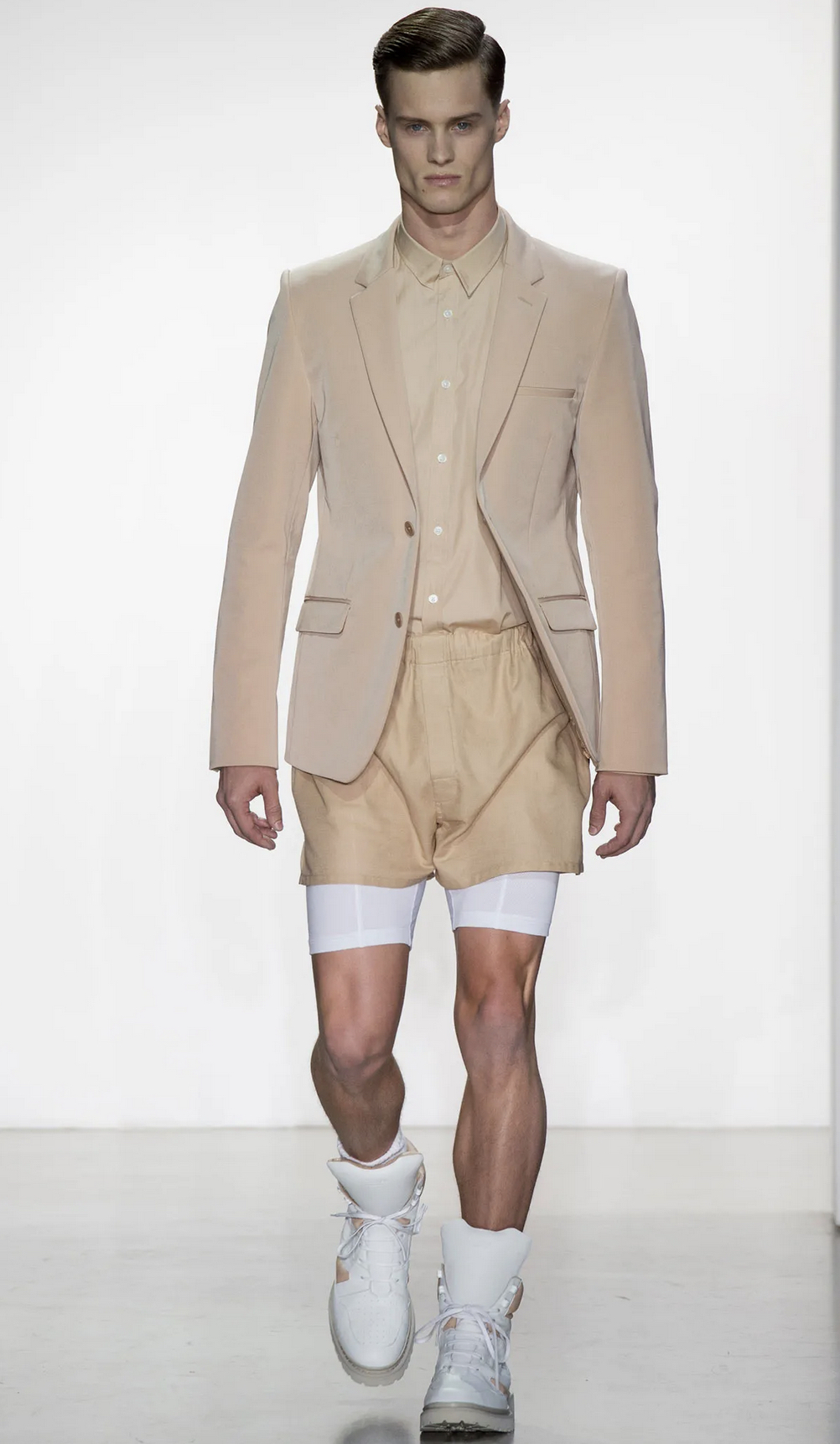
Calvin Klein Men’s Collection
Spring 2015
A decade ago, for Spring 2011, Zucchelli sent out hunky models wearing sporty midriff – a black nylon jacket with zippers and long pants, a cut-out logo sweatsuit, or in extremis a charcoal shiny midriff elbow sleeve loose tee with matching hot shorts. These decade-old men’s looks had vanished to the dustbins of fashion history, stored somewhere in the archives of fashion shows as if they were blockchain NFTs.
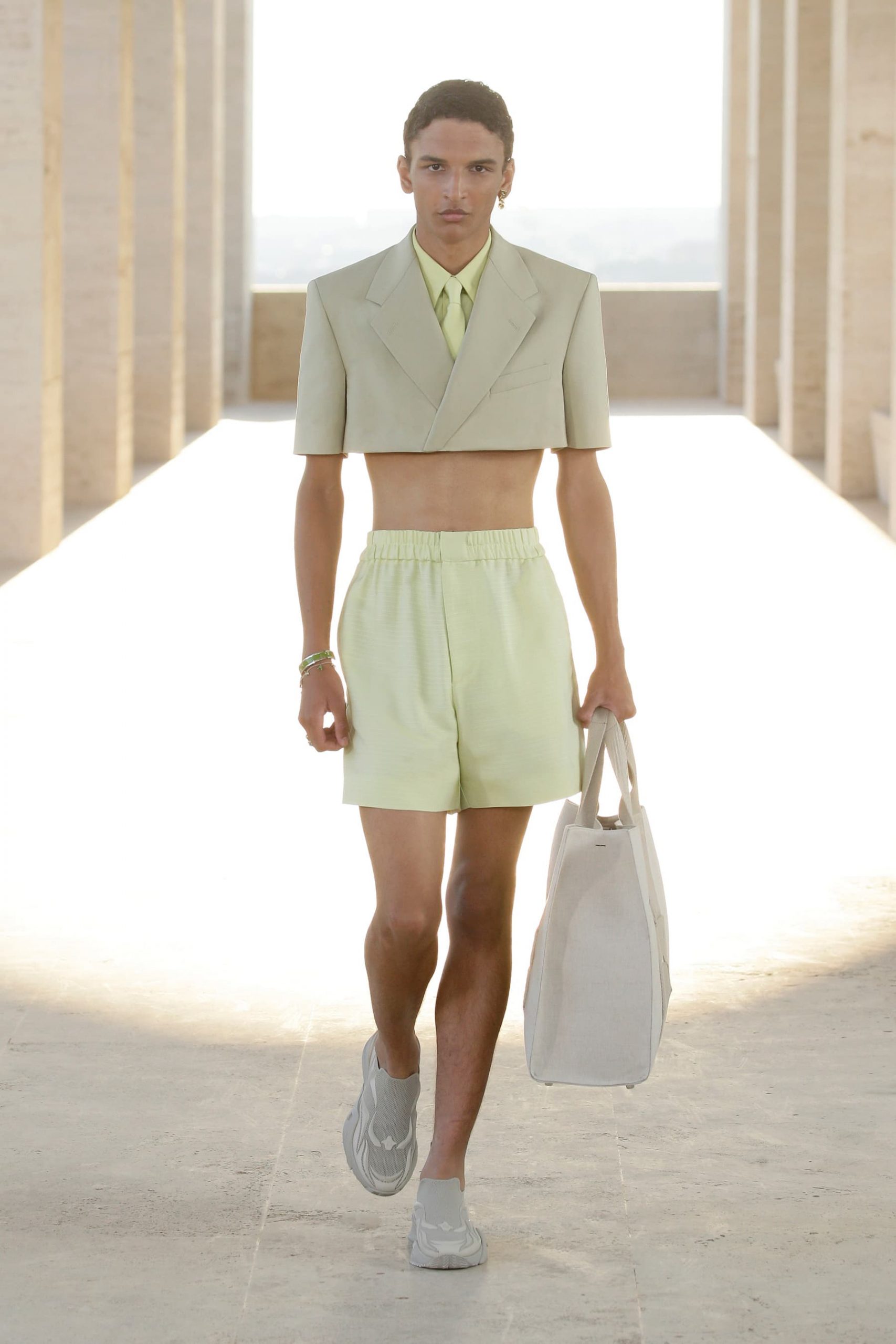
It is hard to see who would embrace these newly emerged midriff suits. However, their commercial manifestations for next summer will include a detachable section added to hide the exposed midriff. An example of this is the black midriff pantsuit with a navy orange hand-dyed half jacket attachment.
There is also a giant difference in the perception of the male within these two collections spaced out precisely a decade apart. What kind of men are these clothes for?
While Zucchelli’s models exuded raw physical strength and his clothes transformed these boys into supermen, the Fendi models are more like those taken directly from a Herbert List shoot from the 1930s. Then, the idea was of youthful innocence, and now it is the prevailing notion of less gendered defined male models. But, this current Fendi casting aligned with the current tempo instead of representing the male ideal in stark contrast to several of the statues placed in front of the Palazzo itself. Hyper athleticism of the bygone years has yielded to genderless representations.
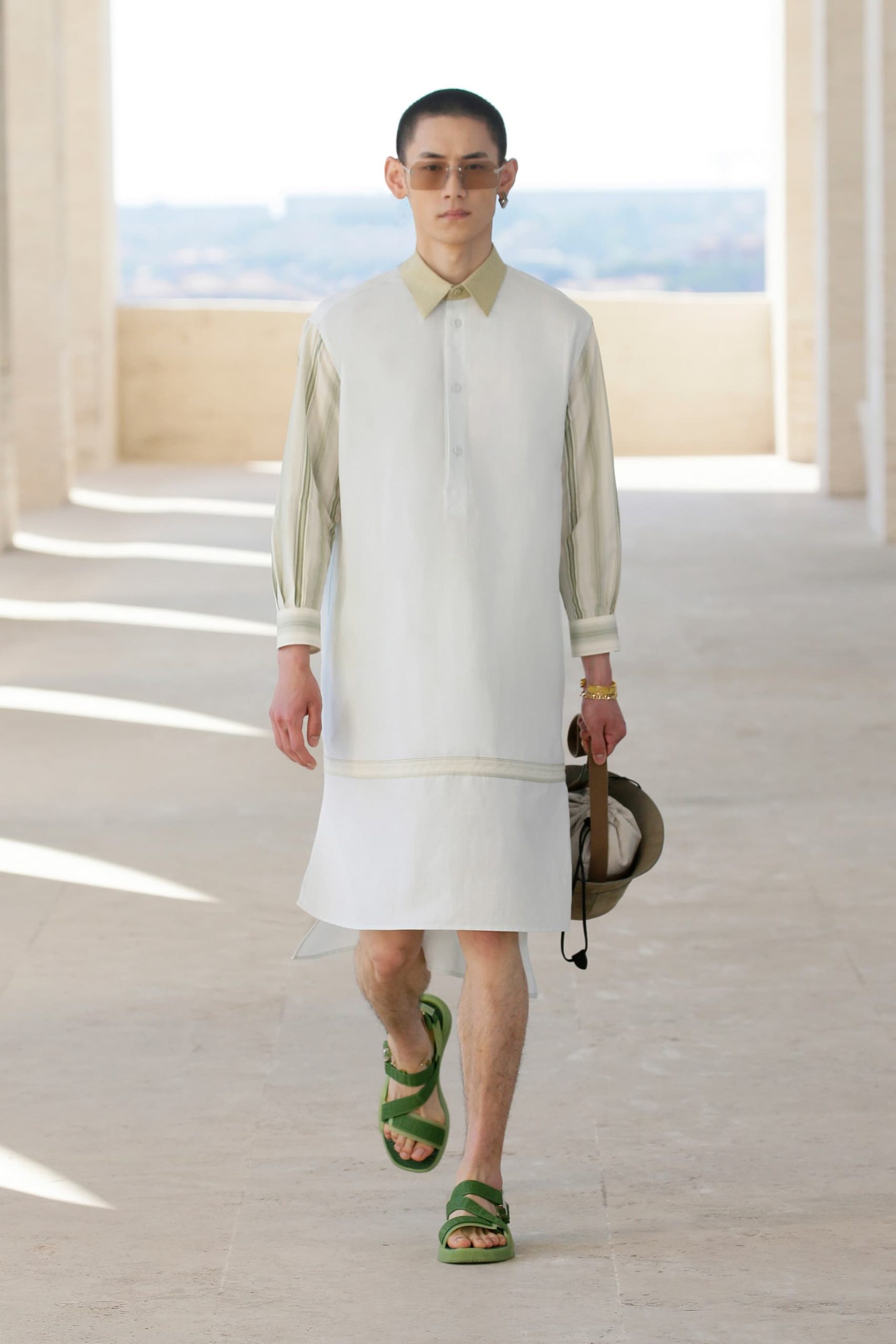
At times in other instances, though, the garment itself felt a bit forced. How does, say, a white knit polo above-the-knee dress with striped cotton sleeves fit into this realm of architecture precision? Except for perhaps the requisite needs for the younger generation to see this collection and this brand as responsive to the rapidly changing idea of what constitutes men’s fashion in the era of gender fluidity?
Despite all of the inherent craftsmanship and heritage artisanal skills making these fine and superb garments, the collection reflects a meticulous planning and an intellectual approach rather than a design ethos to bring out an emotional connection with the audiences, especially the targeted young people. Kids today espouse brands that offer similar values as their own.
How can young people see themselves in these clothes?
How can the young kids identify with this collection?
